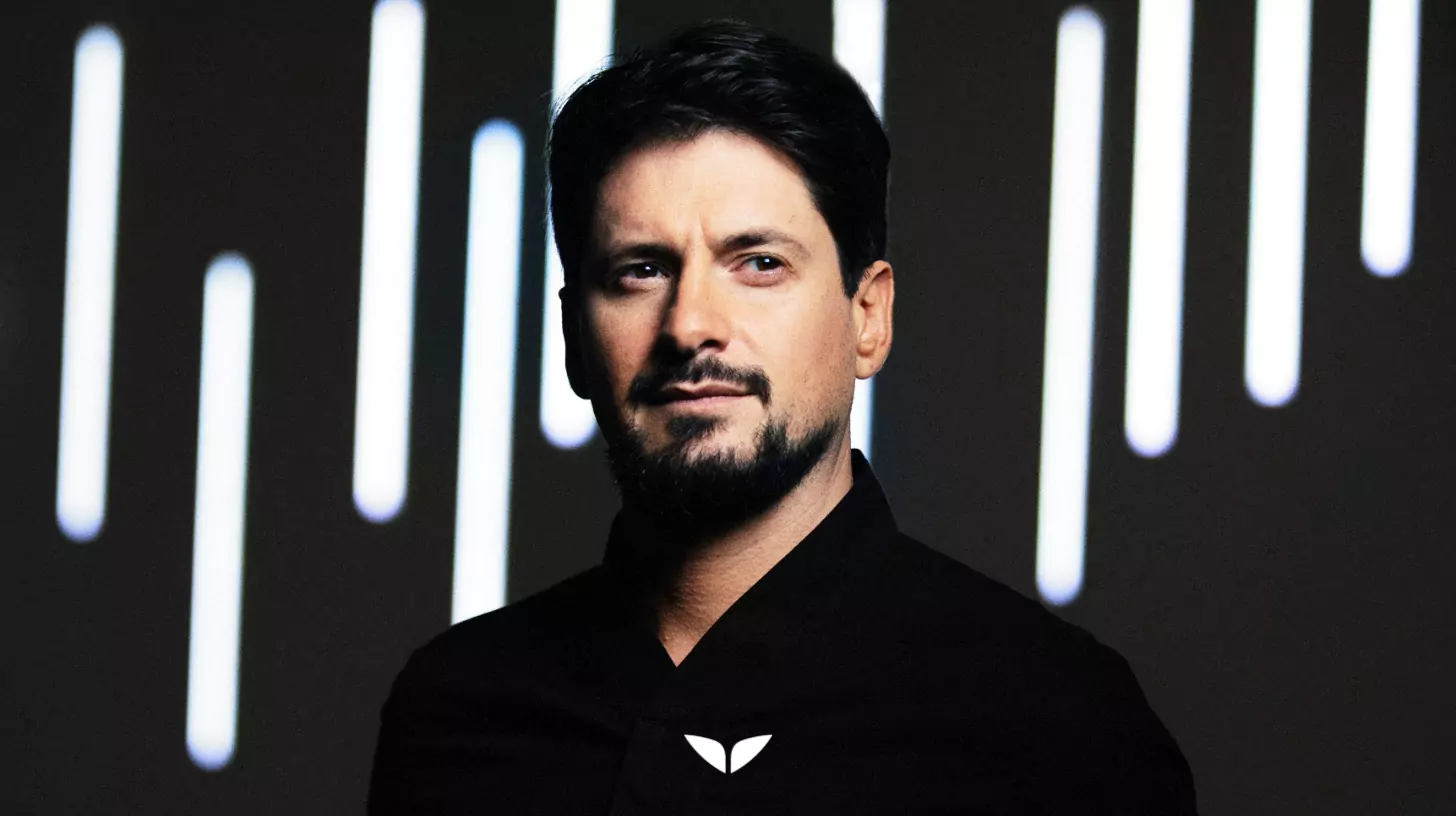Chances are, you’ve heard of Zumba. And perhaps even the Luis Fonzi song that’s often played along with it, “Despacito.”
It’s all thanks, in part, to this man: Jeffrey Perlman, the former chief marketing officer of the global dance-ercize. And it’s now practiced by some 15 million people around the world.
That’s the magic of branding—and Jeffrey is a maestro at it.
The thing is, most people think branding is logos, pictures, graphics. Great brands, as he explains, “give permission for new humans to exist.”
In this episode of The Mindvalley Show, he sits down with Vishen, the founder of the transformational platform, to share how you, too, can build a brand that moves the world.
Watch the full 39-minute interview:
Why transformative branding is powerful, according to Jeffrey Perlman
Apple—innovation, creativity, and sophistication. Nike—empowerment, inspiration, and determination. Lululemon—motivation, self-improvement, and the joy of movement.
Sure, you recognize their logos. But every single aspect of these brand names is carefully curated to evoke emotions.
“What great brands do is they create a neural connection between an emotion and a brand,” Jeffrey says. It’s the comfort you feel when slipping on those familiar shoes, the confidence clutching that sleek device, and the sense of community when you wear that yoga gear.
Jeffrey knows this all too well. Part of his marketing strategy for Zumba was to not just sell community dance classes; instead, it was to sell a global party. Even now, as the brand advisor at Mindvalley, he helps cultivate a world where learning and growth are not just personal achievements but collective experiences.
That’s the transformative power of branding that he brings—turning customers into communities and purchasers into passionate advocates.
Amazing brands are art. — Jeffrey Perlman Share on XResearch backs this up. A study published in the Journal of Brand Management reveals that emotional branding significantly influences customer loyalty and engagement. It’s no longer a guess but a proven science—brands that connect emotionally see a rise in customer commitment.
So, when you’re building your brand, remember: it’s a living, breathing entity capable of touching hearts and moving minds. And that’s your aim. That’s your power.
Creating a brand that moves the World: 5 tips from Jeffrey Perlman
So you’ve got a Shark Tank-worthy idea or product—what next? Logo design, font, or colors are often most people’s next steps.
But Jeffrey would tell you that there’s a much deeper foundation to focus on. Before you even think about visual elements, he advises you to dig into the bedrock of your brand architecture.
Here are five tips to help you get started.
1. Develop your brand filter
When you understand how to build a brand, one of the first things you want to look at is your brand filter. This is a core emotion or brand experience that you want your customers to associate your company with.
For Zumba, it’s the freeing, electrifying joy experienced during a dance class. For Mindvalley, it’s a sense of community, enlightenment, and self-improvement.
“What you’re looking for is an emotion,” explains Jeffrey. “The methodology is very simple: you look at your product experience, and you look at where’s the peak experience of the product.”
Why’s this important? Simply put, it serves as a guiding principle for all brand-related decisions and communications.
2. Create your contrarian world view
“What ‘brule’—what bullsh*t thing—are you going to break?” is the question Jeffrey poses. This is your contrarian worldview.
It’s about identifying and articulating the common belief or industry norm your brand stands against. And Jeffrey demonstrated this with Zumba, turning the pain of exercise into a celebratory global party.
This approach not only helps carve out a unique space for your brand but also attracts those who share the same values.
3. The trigger crystal
The trigger crystal is a specific pain point or moment that your brand addresses, providing a clear solution.
For example, whenever there’s an error message on Windows, the customer would think, “I should’ve gotten an Apple.” This is the trigger that the tech company’s products would solve through simplicity and ease of use.
Identify the frustration your brand alleviates, and use this as a rallying point in your branding strategy.
4. Listening to your brand
Listen to your brand as if it were a person with its own needs and desires. Jeffrey suggests that a strong brand will guide you, often in directions that defy conventional wisdom.
For example, when piracy threatened Zumba in Mexico City, instead of fighting the tide, they listened to what the brand needed. They turned a challenge into an opportunity, placing calls to action on the very DVDs being pirated, which unexpectedly transformed pirates into passionate promoters and instructors. And this helped bolster Zumba’s presence in one of its now-largest markets.
“If you have that level of conviction to your brand, you’re going to listen to your brand more than you’re going to listen to the experts,” he says.
Mind you, this might mean prioritizing brand integrity over short-term profits or following intuitive leaps over market research. But the bottom line is, it’s about developing a relationship with your brand where it can “speak” to you.
5. Honoring your brand
Honor your brand. Treat it with the same respect and integrity you would give to nurturing a child. This means not compromising on your brand promise, values, or essence.
Jeffrey talks about the brand’s inevitable path—once you clearly see where it should go, commit to that direction and build a legacy that’s true to its founding principles.
It takes that level of honor to the brand to so that it can show you the serendipity and show you where it needs to go. — Jeffrey Perlman Share on XGreat entrepreneurs do this. Steve Jobs allowed his intuition for innovation to dictate the brand’s journey, just as an artist trusts their muse. Similarly, Phil Knight honored Nike’s spirit by continuously pushing the envelope, ensuring the brand always ran ahead, never behind.
By truly respecting your brand’s heart and soul, as leaders like Steve and Phil did, you can turn your company into a legend that lasts.

Take the next step
Just as passion can fade in a relationship, a brand can lose its spark. But don’t settle for a narrative that’s turned lackluster. Whether you’re a budding entrepreneur or an established businessperson, you, too, can create a vibrant and enduring brand like Jeffrey Perlman’s Zumba.
You can explore the same expertise that turned dance classes into a worldwide movement with his Mindvalley program, Building an Unstoppable Brand. When you sign up for a free account, you unlock the first few lessons, and you can sample the transformative insights that await.
“A transformational brand,” says Jeffrey, “they teach us who we could be and that’s how they changed the course of history.” And with his help, yours can be among the legends.









